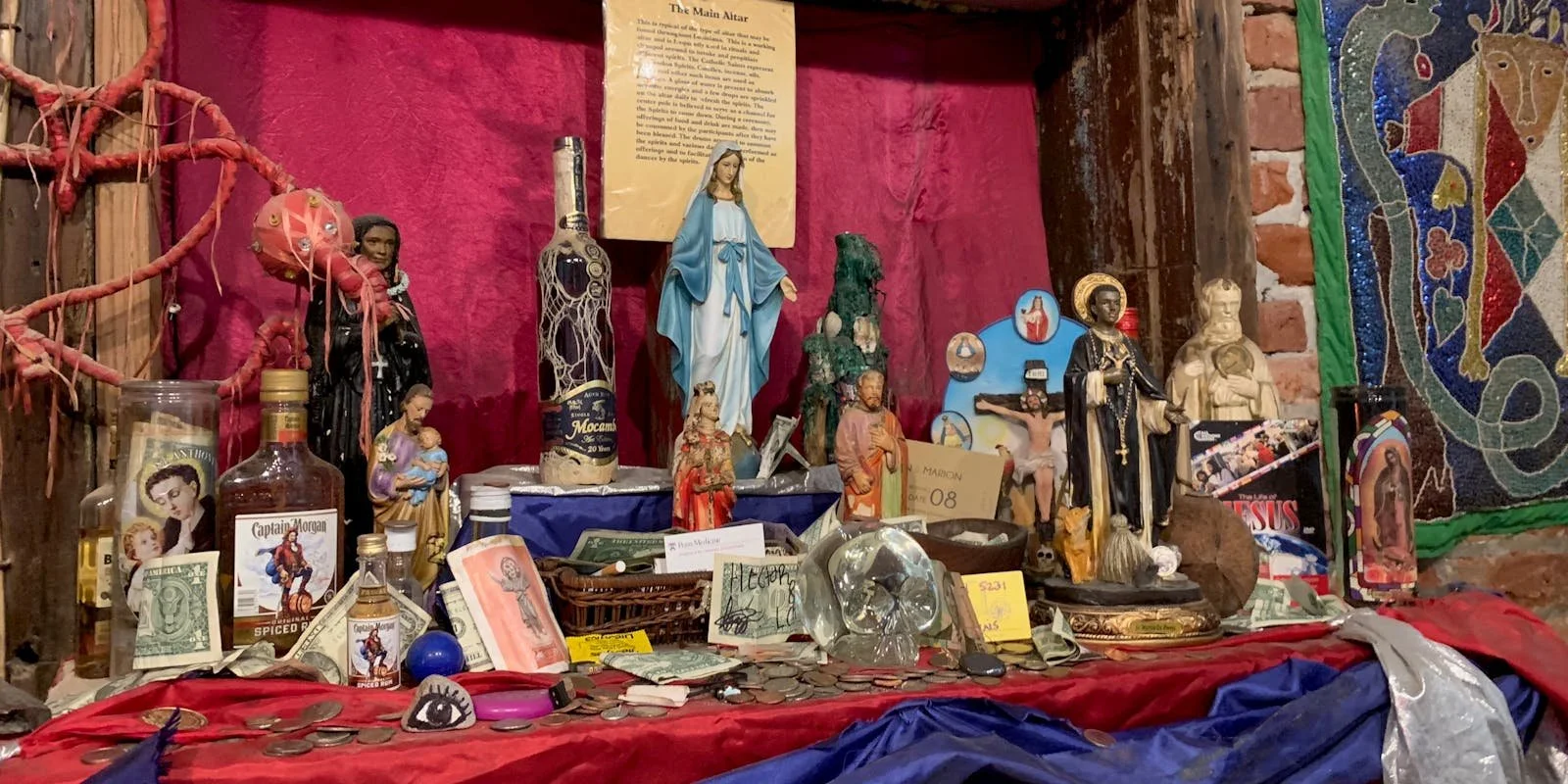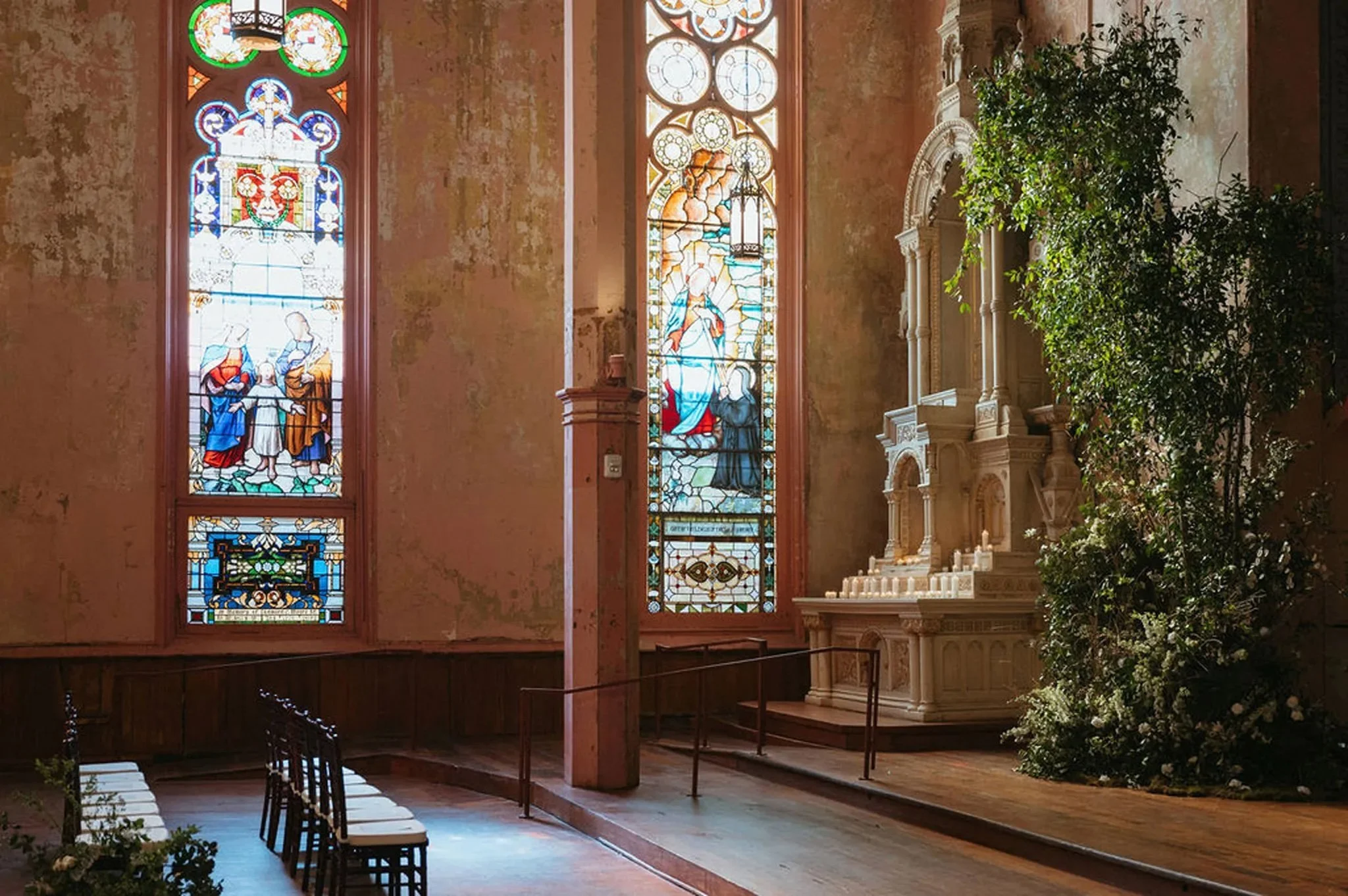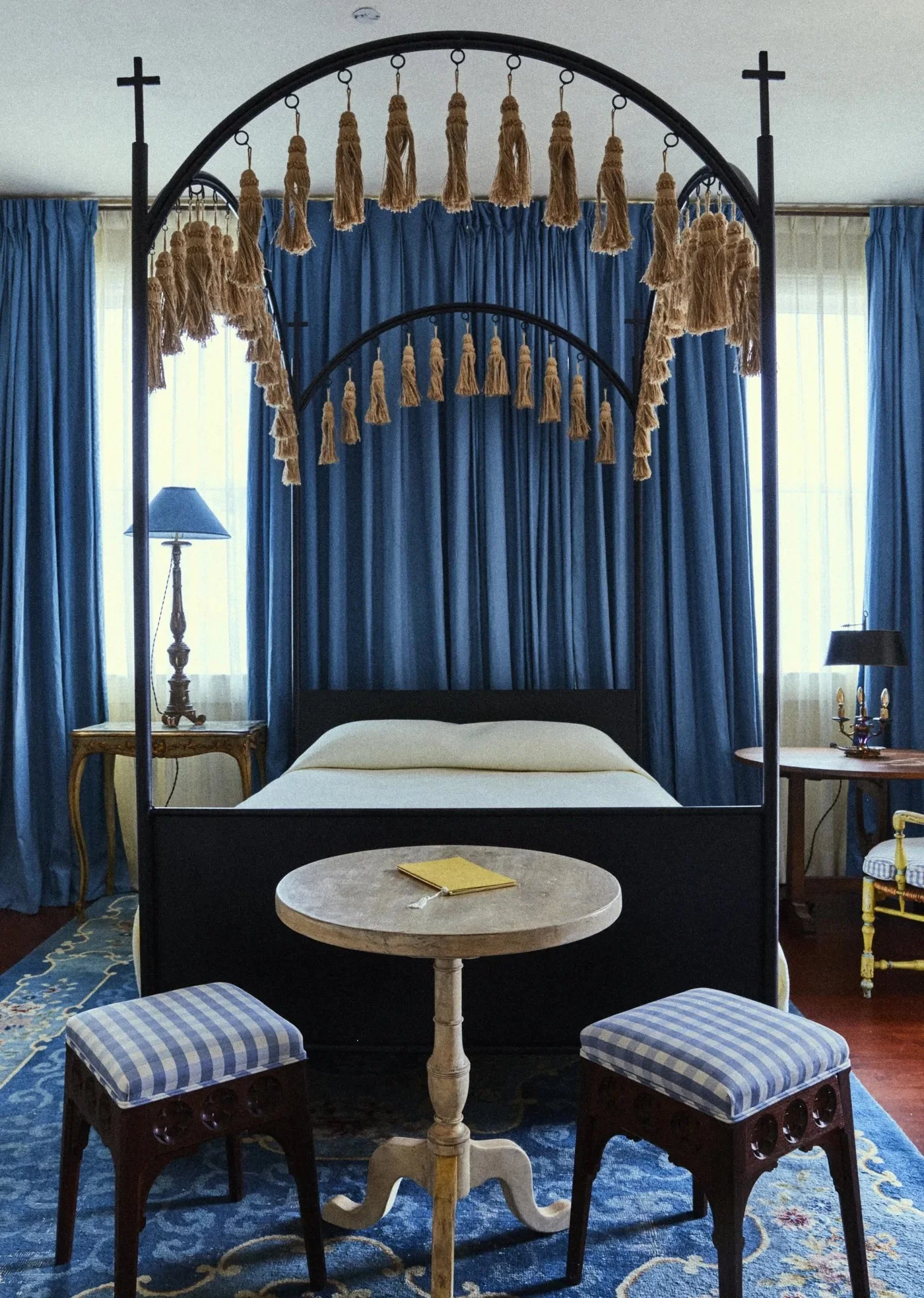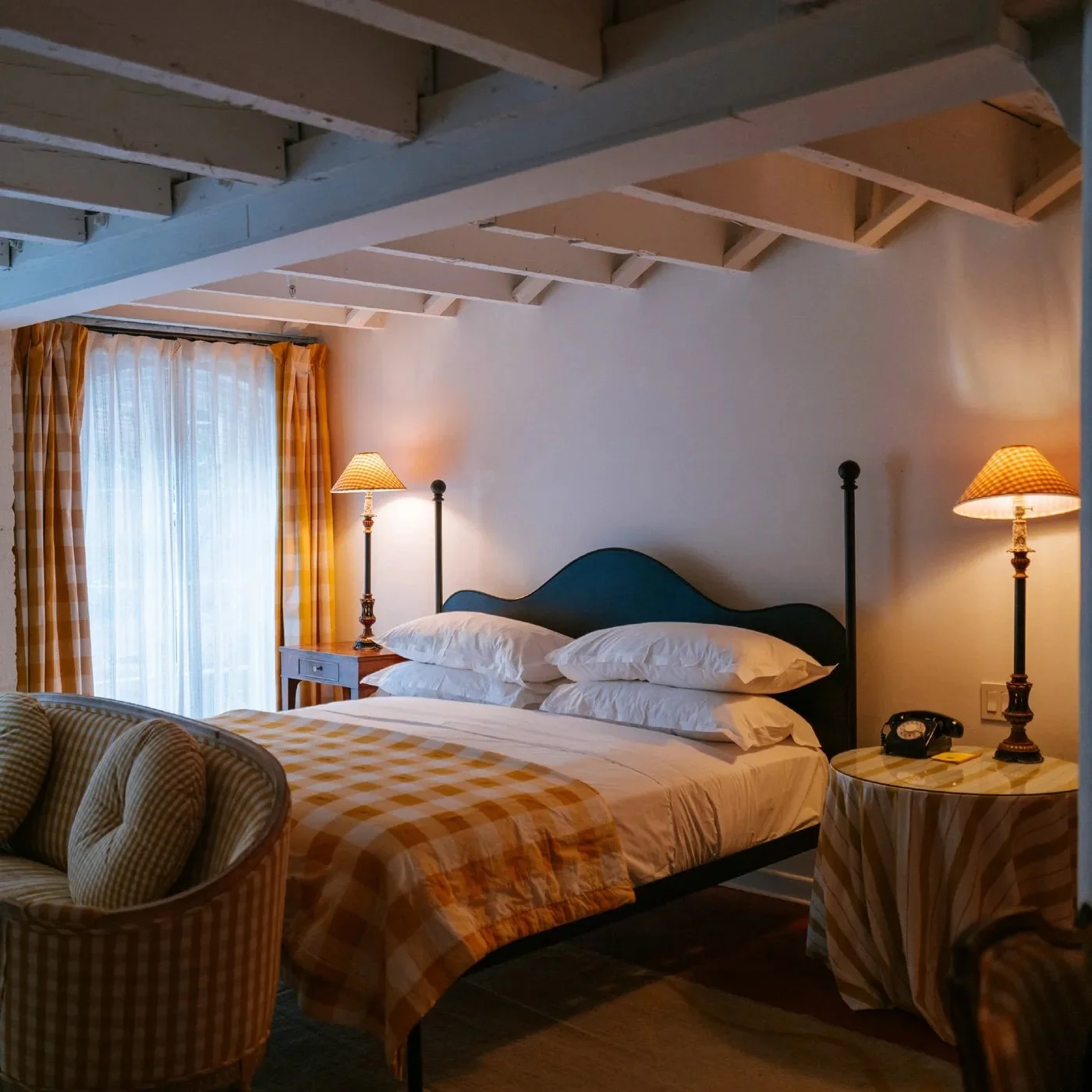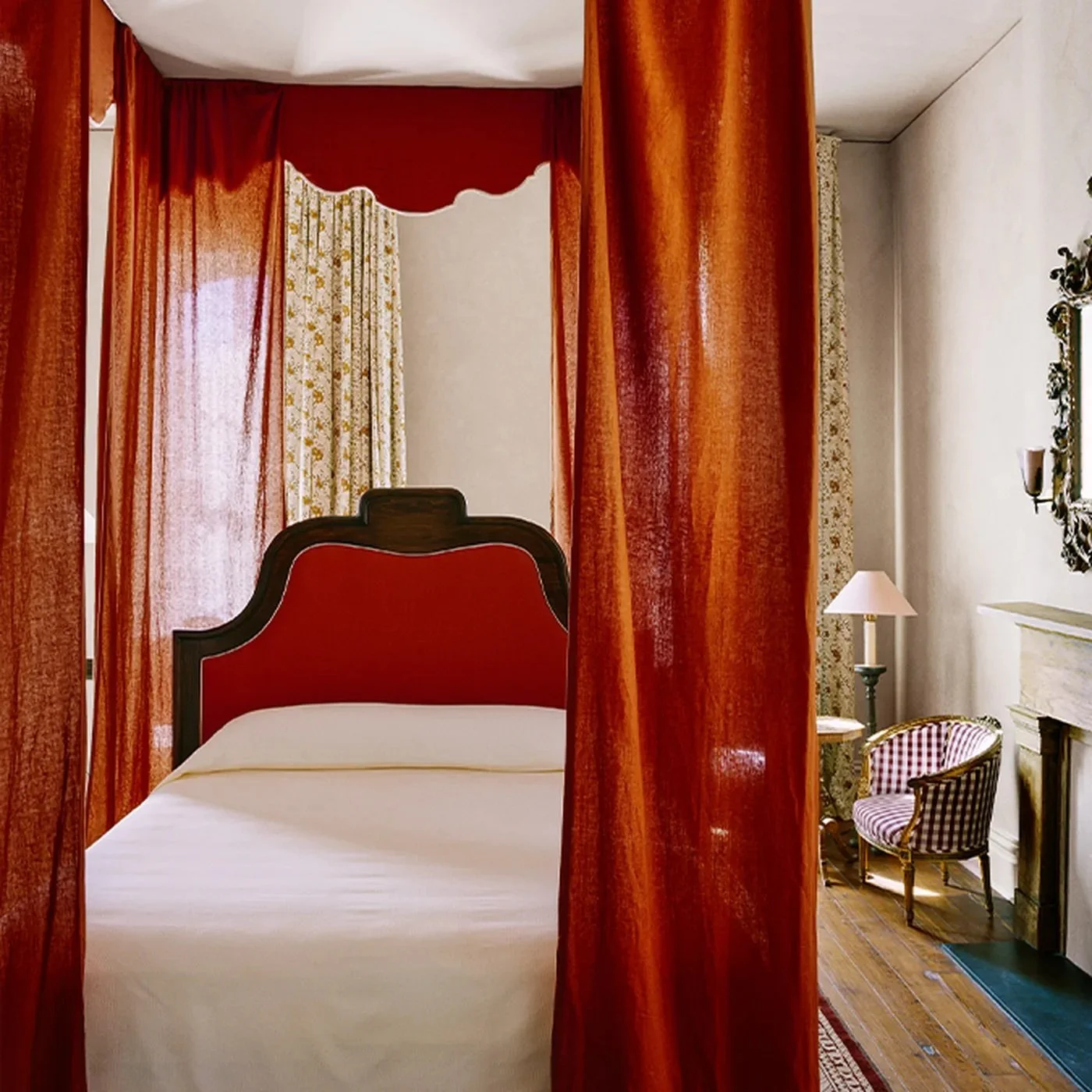Espresso Boarding: New Orleans, LA
Espresso Boarding sends a weekly burst of inspiration for your travel plans.
New Orleans, Louisiana:
Ghosts, Pralines, and Voodoo
Revel in being alive, defiant at back luck or ill fortune, and eat enough beignets and pralines to dance until dawn..
- Cris
WHAT TO SEE
The Backstreets of Faubourg Marigny: Music, Mischief, and One Very Persistent Ghost
New Orleans has a habit of hiding its best stories just off the main road. Case in point: Faubourg Marigny. Step off Bourbon Street and head a few blocks downriver and you’ll find a neighborhood dripping with secrets, swinging to its own rhythm—and maybe, just maybe, haunted by a woman who won’t stay dead.
This place was born of scandal. Bernard de Marigny, the flamboyant Creole who founded the district, reportedly blew through his family’s fortune on women, wine, and a dice game he helped make famous: craps. He sold off his plantation land plot by plot, creating a neighborhood where misfits, musicians, and mystics quietly took root.
Fast forward two centuries, and Marigny is still allergic to normal. Jazz leaks out of cracked windows, murals bloom overnight, and there’s always someone rehearsing a one-person opera on their stoop. But tucked between Frenchmen Street and the cracked sidewalks of Burgundy, there's another story locals only whisper: the ghost of Madame Delphine Bachemin.
She was a Creole widow who lived on Dauphine Street in the 1850s—and died defending her virtue, or so the story goes. When a drunken suitor forced his way into her home one stormy night, she struck him with a fireplace poker, killing him instantly. The next morning, she was found dead in her chair—eyes wide, a scream frozen on her lips. No one knows who—or what—got to her. But to this day, musicians report amps blowing out, strings snapping, and cold hands on their shoulders while rehearsing late at night near her old home.
Marigny isn’t polished. It’s unpredictable, deeply alive—and just haunted enough to keep you on your toes.
Bernard de Marigny defines the phrase “oh crap.”
The Singing Oak of City Park: Where Wind Whispers in a Different Language
In a city where music pours out of every crevice, it’s no surprise that even the trees in New Orleans have something to say.
Tucked inside the wide sprawl of City Park, just past the Big Lake and hidden in plain sight, is a massive live oak strung with what look like oversized wind chimes. But this isn’t some garden-variety tinkling in the breeze. This is The Singing Oak—an art installation by sculptor Jim Hart that turns air into song, and silence into something sacred.
The tree is rigged with chimes tuned to a pentatonic scale. That means every gust of wind, every playful swirl, creates a natural harmony. No wrong notes. No accidents. Just a hypnotic, meditative hum that somehow manages to feel ancient and futuristic at the same time. Some locals say it’s the sound of New Orleans breathing.
But here's the part they don’t print on the tourist brochures: people swear it talks to them. Not in words, but in feelings. Grief lightens. Romance blooms. One guy even proposed under it—and swears the tree gave him a "yes" before his girlfriend did. Children lie on their backs and stare up like they’re in church. Strangers hold hands. Time slows.
Legend has it that a woman once visited the tree every Sunday for months after losing her husband. She never spoke. Just sat. Then, one day, she left a note tucked into the tree’s roots: “Thank you. You gave me his voice again.”
The Singing Oak doesn’t ask for money. It doesn’t post to Instagram. But if you stand there long enough, it’ll sing something just for you—and maybe, just maybe, you’ll hum it for the rest of your life.
The Voodoo Museum: Spells, Scandals, and the Spirit of New Orleans
Walk a block off Bourbon Street and you’ll find one of the most curious little museums in America: The New Orleans Historic Voodoo Museum. It’s tiny—just two dimly lit rooms—but don’t let the square footage fool you. The energy inside is bigger than any cathedral.
Founded in 1972 by artist and cultural preservationist Charles Gandolfo, the museum is more than just a showcase of skulls, altars, and gris-gris bags. It’s a front-row seat to one of the most misunderstood (and gossiped-about) spiritual traditions in the Western Hemisphere. And here in New Orleans, voodoo isn’t a spooky subplot—it’s history, religion, and rebellion all rolled into one.
The scandal? For centuries, elite society in New Orleans tried desperately to keep voodoo underground—while secretly indulging in it. Wealthy Creoles would publicly clutch their pearls at the mention of “hoodoo,” but privately consult practitioners for love charms, gambling luck, and even hexes against political rivals. One of the most famous cases? Mayor Étienne de Boré, who allegedly used a voodoo priestess to jinx a competitor during a bitter sugar cane trade dispute in the early 1800s. The competitor’s plantation mysteriously flooded—on a sunny day.
At the center of all voodoo whispers stands one name: Marie Laveau. A free woman of color, hairdresser to the elite, and legendary voodoo queen, Laveau blurred the line between high society and the spirit world. She knew everyone’s secrets, baptized in St. Louis Cathedral by day and danced with spirits at Congo Square by night. It’s said she once “settled” a murder trial by simply placing three Xs on a courtroom bench the night before the verdict. The accused walked free.
The museum honors this rich, tangled legacy. Inside, you’ll find relics from real rituals, altars still in active use, and offerings left behind by visitors seeking help from the spirits. There are stories of love spells that worked too well, political curses that aged senators overnight, and dolls that allegedly moved after hours (according to more than one intern).
Is it spooky? Yes. But it’s also soulful, subversive, and undeniably New Orleans.
The Museum of Death: New Orleans’ Creepiest Address (and Most Bizarre Date Idea)
Let’s be honest: New Orleans has a reputation for flirting with the dead. Ghost tours? We’ve got them. Haunted mansions? Plenty. Cemeteries that look like sculpture gardens for vampires? Everywhere. But if you’re craving a deep dive into the really dark side of human curiosity, there’s one place that makes even locals raise an eyebrow - the Museum of Death.
Located on Dauphine Street, just a few blocks from the raucous chaos of Bourbon, this unassuming building houses a collection that walks a tightrope between morbid fascination and outright horror. It's not a haunted house. There are no jump scares. Just real death, real stories, and real artifacts... and yes, it’s gloriously creepy.
Originally founded in California, the New Orleans branch of the Museum of Death opened its doors to the public in 2014. And since then, it has built a cult following of true crime fans, curiosity seekers, goth kids on field trips, and couples looking to test the limits of their second date. Its mission? To "make people happy to be alive." (Not kidding - that’s their slogan.)
So what’s inside? Brace yourself:
An actual set of photos from the Manson Family crime scenes.
Original artwork by serial killers, including John Wayne Gacy (who liked to paint clowns, obviously).
Vintage mortician tools, embalming equipment, and autopsy photos from the early 1900s.
A collection of funeral ephemera, including antique coffins, Victorian mourning jewelry, and pamphlets from some of the weirdest eulogies ever delivered.
And yes, there’s an entire wall dedicated to cult deaths, complete with creepy recordings and memorabilia from Heaven’s Gate and Jonestown.
One of the most talked-about items? A suicide machine designed by Dr. Jack Kevorkian, the infamous right-to-die advocate. It looks like something a high school science teacher might’ve built out of spare vacuum parts - until you realize what it was used for.
What makes the Museum of Death so… oddly enjoyable? For one, it doesn’t feel exploitative. There’s no cheesy music or over-the-top horror narration. Everything is presented matter-of-factly, with a wink toward the macabre and a heavy dose of “Can you believe this is real?” It’s like walking through a crime scene scrapbook compiled by your weirdest, smartest friend.
But it’s not all doom and gloom. There’s a strange sense of connection that happens when you walk through rooms full of mortality. People laugh nervously. They whisper. They lean in close and say, “Okay, this is messed up - but fascinating.” And by the time you step back into the humid Louisiana air, blinking at the sunlight and maybe hugging your plus-one a little tighter, the effect kicks in: you really are glad to be alive.
Is it for everyone? Absolutely not. If you’re squeamish, or if you think taxidermy is a personal affront to dignity, you might want to stick with the carousel at City Park. But if you’ve got a taste for the taboo - and a strong stomach - it’s one of the most unforgettable stops in New Orleans.
And hey, if you make it through the Manson files and still want to kiss your date on the sidewalk outside? You might just be soulmates.
The spirit of New Orleans is a celebration of life but you don’t need to be local to join! The recipes shared here capture the soul, taste, and spirit of New Orleans in your own home.
In the area? Check out these top places to eat.
They don’t suffer fools
I 💜 any place that makes it clear that fools will not be tolerated. These are my people! Coop’s Place is tops on my list of places to eat in New Orleans. Don’t be misled by the cute napping alligator on their menu - they are very serious about great food. Right on Decatur Street but stubbornly un-touristy, Coop’s is a dive that locals love for late-night bites and no-nonsense service. Get the rabbit and sausage jambalaya, then try not to order a second round. Spicy, smoky, and unforgettable.
Not hungry? (seriously? no one believes you) You can still enjoy their sense of humor by checking out their website. Their chosen review makes me laugh. If you want to see actual pictures of food then head to Instagram - but bring a napkin because drool is unbecoming.
The oyster temple of uptown
Step into Casamento’s, and you’re not just stepping into a restaurant - you’re walking into a seafood cathedral made of white tile, Gulf Coast grit, and pure New Orleans tradition. Open since 1919 and still family-run, this narrow Uptown gem looks like it was sealed in a time capsule, then reopened just for you and your appetite.
Locals love it. Tourists whisper about it. And if you know what you’re doing, you bring cash and don’t show up in summer because Casamento’s shuts down when oysters aren’t at their briny best. Quality, after all, isn’t seasonal - it’s sacred.
🦪 What to Order:
Fried Oyster Loaf – Forget your standard po’ boy. This bad boy is served on thick, toasted pan bread, piled high with golden oysters and slathered in flavor. Crunchy. Salty. Heavenly.
Raw Oysters on the Half Shell – Freshly shucked right in front of you, ice-cold and impossibly clean. The kind of oyster that doesn’t need cocktail sauce but go ahead, live a little.
There’s no slick branding here. Just tight tables, quick service, and the undeniable sense that you’ve just joined something timeless. Casamento’s isn’t a stop. It’s a rite of passage.
Where civil rights met Creole gumbo & the flavor still speaks volumes
At Dooky Chase’s, you’re not just having lunch - you’re tasting history.
Founded in 1941 in the heart of Tremé, this iconic restaurant became a hub for civil rights leaders, jazz musicians, artists, and presidents alike. Dr. King strategized here. Ray Charles sang about it. Barack Obama sat down for gumbo and left with a heart full of respect. Dooky Chase’s has had the pleasure of serving both President George W. Bush and President Barack Obama, Hank Aaron, Ernest Gaines, Quincy Jones and a list of others.
But the real queen of this kitchen was the late Leah Chase - chef, activist, and culinary legend. She turned red beans and rice into a political statement and gumbo into a love language.
🍲 What to Order:
Creole Gumbo – A steaming bowl layered with shrimp, chicken, sausage, and soul. It’s not just food - it’s storytelling by the spoonful.
Fried Chicken – Crispy, golden perfection that once made Anthony Bourdain pause mid-sentence. 🫨
Peach Cobbler or Lemon Meringue Pie – The kind of dessert that makes you want to call your grandma and say thank you.
The dining room is warm, the walls are lined with African American art, and the service feels like a hug. Dooky Chase’s isn’t just a place to eat - it’s a place to remember who paved the way.
Guilt Not Included
Have you ever fallen asleep in church? We won’t tell anyone. The Hotel Peter & Paul is your chance to sleep in (a decommissioned) church without feeling guilty. If you’re looking for a stay in New Orleans that feels like a storybook come to life, Hotel Peter and Paul is your spot. Located in the heart of the Marigny neighborhood, just a short stroll from the French Quarter, this one-of-a-kind boutique hotel occupies a former 19th-century Catholic church complex. The transformation is stunning - equal parts reverent and whimsical.
Each of the four buildings - the schoolhouse, rectory, convent, and church - has been lovingly restored with an eye for detail. Think stained-glass windows, original hardwood floors, and carefully sourced antiques that nod to the site’s past without feeling stuffy. No two rooms are alike, and that’s by design. Some have soaring ceilings with vintage chandeliers, others feature clawfoot tubs or velvet settees. It's not just accommodation - it’s an experience.
The hotel’s on-site bar, The Elysian Bar, is worth a visit in its own right. Set in the former rectory, it’s moody, elegant, and unmistakably New Orleans, serving craft cocktails and creative small plates in a space filled with candlelight and conversation.
Guests rave about the quiet ambiance, the attentive service, and the feeling that they’ve discovered a hidden gem. It's ideal for travelers who want something more personal and memorable than a chain hotel, whether you're in town for jazz, food, or just the magic that is New Orleans. It does not matter if you are Catholic, Muslim, Straight, Gay, or any other label because all are welcomed here. This reservation does not include Catholic guilt.
Staying at Hotel Peter and Paul feels like living in the city’s layered history, with all the comfort and style of a modern retreat. You’ll leave with more than photos—you’ll leave with stories.
A Time Machine With A Pulse
Stepping into The Columns is like walking into a Tennessee Williams play, if it were staged inside a Gilded Age mansion and served stiff Sazeracs on a wraparound porch. Perched along stately St. Charles Avenue in the Garden District, this 19th-century beauty isn’t just a hotel - it’s a time machine with a pulse. It's moody, it's ornate, it's a little haunted (probably), and it’s exactly the kind of place you go when you want your trip to New Orleans to feel like a novel you don’t want to finish.
From the outside, The Columns looks like something out of an oil painting. Massive Corinthian columns, floor-to-ceiling windows, and wrought iron balconies hint at the Southern grandeur inside. Once you step through the heavy front doors, the atmosphere wraps around you like velvet. The wood is dark, the ceilings are high, and the chandeliers seem to float. There's a grand staircase that makes you want to make an entrance, even if you're just heading down for a cocktail.
And oh, the cocktails. The Columns is just as famous for its bar as it is for its beds. The front porch - yes, that porch - is the place to be at sunset, where locals and travelers alike sip old fashioneds and watch the streetcars roll by. Inside, the bar is lush, intimate, and brimming with atmosphere. It feels like secrets have been whispered here for a century, and you’re about to overhear one.
Upstairs, each of the 20 guest rooms is uniquely styled - think four-poster beds, vintage rugs, and stained-glass accents. There’s nothing cookie-cutter here. Even the creaks in the floorboards feel like part of the charm. Some rooms overlook the oak-lined avenue; others feel tucked away and private, like your own little Southern hideaway. It took me a few days just to process that this hotel began as a family home. My style is more Mid-Century Modern or full blown Modern and so the contrast boggled my simple brain.
This is not a place for sterile, corporate overnights. The Columns is for romantics, history buffs, and curious souls who want a little bit of soul with their stay. It’s the kind of hotel where you’ll plan to check out early, but stay for another drink, another story, and another evening on that magic porch.

Need a place to sleep?




